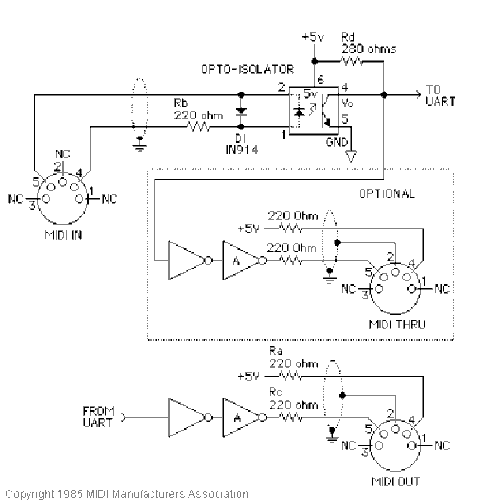Just finished more testing.
Firstly I though maybe doing a serial.end() to serial.begin() might do a reset enough to re-connect the uart, it failed.
Then I have tried reading the data directly off the uart pin as I mentioned above, this did not work either.
@mongrol, your experience with the teensy dropping out could be very well related, but I cannot power cycle the arduino because all my menu's are programmed into it, Restarting it would take me back to the beggining of my menu, so this is not an option.
But one thing is for sure, The Arduino Due TX pin can be wired directly into the "Axoloti Midi In 5 pin Din" (try saying that 5 times realy fast..  ) works perfectly at al times.
) works perfectly at al times.
So this is my solution for now, yes it takes up a midi input, but at least it still leaves with the USB midi input if needed.
And believe it or not, this issue is my last final major core hurdle to get over in my setup, everything else is just building some more hardware with switches and tidying up some of my messy coding. Will add it all to my project page when i get it all cleaned up.
I hope this documentation is useful to anyone else experiencing similar issues.
No more testing from me on this one for quite a while.







 (Edit: I am such a newbie... I thought I could just wire into the TX/RX pins and go. Obviously not thinking clearly at all and now realize without using the
(Edit: I am such a newbie... I thought I could just wire into the TX/RX pins and go. Obviously not thinking clearly at all and now realize without using the 